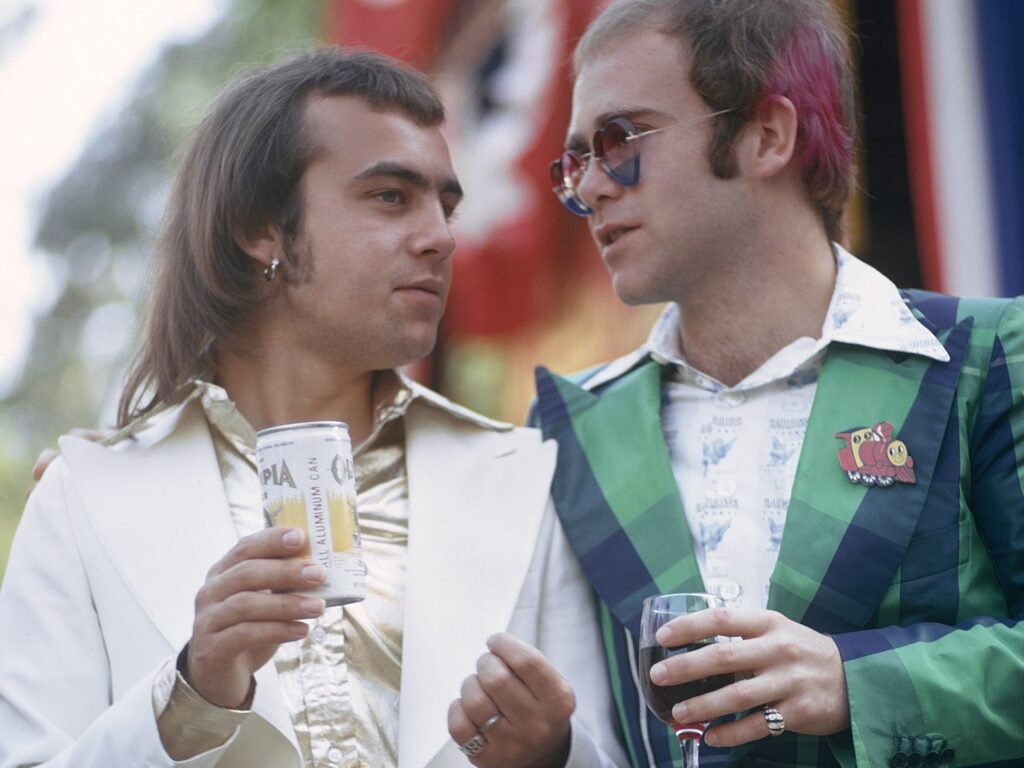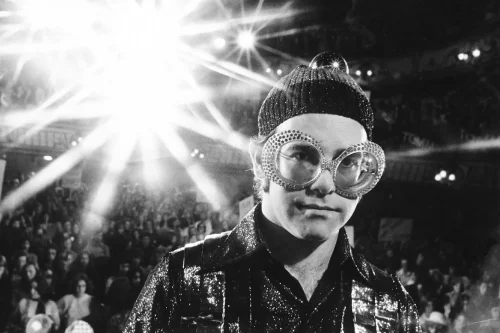In the vast pantheon of modern music, few artists have managed to redefine genres as distinctly as Elton John. His career, spanning over five decades, is not just a testament to longevity but to a transformative influence on the music landscape. Elton John played a pivotal role in merging pop and rock, two of the most dominant musical forces of the 20th century. While pop music typically catered to mainstream tastes with catchy melodies and broad appeal, rock was often seen as more rebellious, with its raw energy and emphasis on musical skill and innovation. The blend of these styles was not just innovative but revolutionary, creating a new playbook for artists that followed.
Elton John’s approach to this fusion was both subtle and spectacular, weaving the straightforward appeal of pop with the complex, often gritty elements of rock. This amalgamation proved groundbreaking, paving the way for a genre that could embrace broader demographics while still providing the depth that music aficionados appreciated. The relevance of this blend is underscored by its lasting impact on music, influencing how genres could be navigated and merged, and breaking down the barriers that often separated music communities. Explore how Sir Elton didn’t merely coexist within these genres but created a compelling hybrid that resonated with a diverse audience, setting new standards in the music industry.
Defining the Pop-Rock Hybrid

As Elton John ascended to fame in the early 1970s, the musical landscapes of pop and rock were both distinct and highly influential. Pop music, characterized by its broad appeal, catchy melodies, and simple structures, was designed to be accessible and radio-friendly. Artists like The Beatles had already begun blurring the lines between pop sensibilities and experimental sounds, but the genre primarily focused on short, hook-laden songs aimed at the charts. In contrast, rock music, especially with the advent of hard rock and progressive rock, emphasized musical depth, complexity, and a rebellious spirit. It prioritized instrumental virtuosity, innovative sound production, and thematic album-oriented approaches.
Bridging these two genres, as Elton John did, involved melding the catchy accessibility of pop with the sophisticated musicianship and edginess of rock. This synthesis was neither straightforward nor universally accepted at the time. The challenge lay in creating music that retained enough mainstream appeal without sacrificing the artistic and experimental integrity typical of rock. Moreover, it required an artist to be versatile in voice, skilled in composition, and daring enough to transcend traditional boundaries.
Elton John met these challenges head-on with his dynamic range in vocal ability, his partnership with lyricist Bernie Taupin, and his flair for theatrical, engaging performances. The innovations involved in this bridging were substantial: Elton introduced complex arrangements and orchestration into songs that maintained pop structures, infused rock’s intensity into the performance of pop songs, and embraced themes and storytelling that resonated with both pop and rock audiences. This blend was evident in albums like Goodbye Yellow Brick Road and Captain Fantastic and the Brown Dirt Cowboy, where the lushness of pop was seamlessly integrated with the grit and substance of rock.
Elton John’s Musical Innovations

Elton John’s unique contribution to music lies in his sophisticated blending of melodic sensibilities, harmonic complexities, and lyrical depth, which bridged the gap between pop and rock with seamless artistry. His music, while universally appealing, carries an intricacy and emotional depth that transcends simple pop formulas.
Melodic Sensibilities: Elton John’s melodies are memorable yet sophisticated. Songs like “Your Song” and “Tiny Dancer” exemplify his ability to create tunes that are instantly appealing and easy to sing along to, yet they carry a depth that rewards repeated listening. These melodies often blend the straightforward, catchy nature of pop with unexpected twists in phrasing and modulation characteristic of more complex rock structures.
Harmony: Harmonically, Elton John’s music often ventures beyond the basic chords found in much of mainstream pop. His use of complex chord progressions and modal interchanges in songs such as “Bennie and the Jets” and “Goodbye Yellow Brick Road” introduces a rock-like richness and unpredictability. This harmonic sophistication helps bridge the sonic aesthetics of rock with the structural and stylistic elements of pop, creating a lush, engaging soundscape that appeals to a wide audience.
Lyrical Themes: The partnership with lyricist Bernie Taupin was crucial in developing a lyrical style that resonated with both pop and rock audiences. Their collaboration led to lyrics that combine personal introspection with broader, more abstract themes, typical of rock music. For instance, “Rocket Man” tackles the feelings of isolation and alienation, themes commonly explored in rock, yet the song’s accessible lyricism and structure allow it to retain a pop sensibility. Similarly, “Levon” features storytelling that contains a depth and narrative complexity echoing the conceptual ambitions of progressive rock.
Exemplary Songs and Albums
- “Goodbye Yellow Brick Road” (Album): This album is a quintessential example of Elton John’s fusion of pop and rock. From the title track’s reflective, balladic quality mixed with dramatic, rock-driven passages to “Candle in the Wind,” which combines a soft rock feel with pop accessibility, the album showcases Elton John’s mastery of genre blending.
- “Captain Fantastic and the Brown Dirt Cowboy” (Album): As a concept album, it delves into autobiographical themes with a rock-oriented narrative structure, yet maintains pop appeal through melodic charm and lyrical universality.
- “Bennie and the Jets” (Song): With its pounding piano riff and a blend of glam rock style with R&B influences, this track is an example of how Elton John could create a rock atmosphere within a fundamentally pop framework, making it one of his most distinctive crossover hits.
Through these musical elements, Elton John not only bridged pop and rock but also created a new musical vocabulary that allowed these genres to coexist and enrich each other, paving the way for future artists to explore genre fusion with greater freedom and creativity.
Impact on the Music Industry

Elton John’s distinctive fusion of pop and rock not only captivated audiences worldwide but also left a profound impact on the music industry’s approach to genre, production, songwriting, and artist image. His innovative style prompted a more fluid interpretation of musical genres, influencing a generation of artists and reshaping industry practices.
Influence on Genre
Elton John’s career serves as a compelling case study in the breaking down of genre barriers. By seamlessly blending pop’s catchy accessibility with rock’s depth and edge, he demonstrated that music could transcend traditional categorizations, leading to broader audience appeal and commercial success. This genre hybridization encouraged record labels and producers to explore similar crossover approaches, leading to the development of new subgenres and the rise of artists who might not fit into rigid genre classifications.
Music Production
Elton John’s approach to music production also set new standards. His albums often featured lush orchestration, intricate arrangements, and a high level of production polish that were more typical of rock albums, yet they maintained the clarity and focus expected in pop recordings. This high production value became a hallmark of his style, influencing how albums were produced in terms of technical quality and creative scope. Albums like “Goodbye Yellow Brick Road” and “Honky Chateau” showcased sophisticated production techniques that blended various instruments and sound layers, setting a precedent for future productions in both rock and pop music.
Songwriting
The songwriting partnership of Elton John and Bernie Taupin was particularly influential. They proved that pop music could carry the emotional weight and narrative complexity typically associated with rock, without sacrificing the infectiousness required for chart success. This elevated the standard of what could be expected from pop songwriting, encouraging other songwriters to aim for a deeper emotional and lyrical quality in their work. Their approach broadened the scope of pop music themes, moving beyond love songs to address more diverse and complex subjects.
Artist Image
Elton John’s flamboyant style and persona were as integral to his impact as his music. His bold, sometimes outrageous stage outfits and public appearances challenged the conventional image of pop and rock stars, mixing the glam of rock with the approachability of pop. This blurring of stylistic and aesthetic lines in his public persona mirrored his musical approach, creating a distinctive brand that was both relatable and aspirational. It opened the door for artists to express their identities more freely and creatively, impacting how artists marketed themselves and engaged with their audiences.
Legacy of Fusion

Elton John’s innovative fusion of pop and rock not only marked a significant phase in his career but also laid the groundwork for subsequent artists and bands who looked to merge genres in their own creative endeavors. His influence is evident in the evolution of pop-rock and beyond, impacting artists across multiple genres who strive to blend diverse musical elements into cohesive, appealing works.
Artists Influenced by Elton John
Billy Joel often drew comparisons to Elton John for his ability to combine poignant lyrics with strong, memorable melodies, straddling the line between pop’s accessibility and rock’s depth.
Freddie Mercury and Queen shared a flair for the dramatic with Elton John, merging rock with elements of opera, disco, and pop in a way that broadened the definition of rock music. Mercury’s theatrical performance style and complex compositions echo the boundary-pushing aspects of Elton John’s approach.
Lady Gaga has cited Elton John as a significant influence on her music and style. Her ability to fuse electronic, dance, and pop with rock and theatrical elements can be seen as a continuation of the genre-blending ethos pioneered by Elton John. Furthermore, their collaborations have highlighted the intergenerational impact of his music.
Impact on Musical Trends
The 1980s and 1990s saw an explosion of genre-blending artists, where pop bands like Duran Duran incorporated rock guitar riffs into their music, and rock bands like Bon Jovi adopted catchy choruses typical of pop music. This trend towards a more hybrid musical style owes much to the paths paved by Elton John.
The rise of alternative rock in the late 1980s and 1990s also reflected Elton John’s influence. Bands like Radiohead and Coldplay merged introspective rock with elements of electronic and pop music, achieving a balance that appealed to both mainstream and alternative audiences.
Evolution of Pop-Rock
The evolution of pop-rock into a more diverse genre can also be traced back to Elton John’s legacy. His approach demonstrated that pop music could maintain its mass appeal while incorporating the sophisticated musicianship and thematic depth traditionally reserved for rock. This has encouraged a more inclusive understanding of what pop music can be, leading to richer, more varied musical offerings.
Today, genres are more fluid than ever, with artists freely incorporating elements from across the musical spectrum. This genre fluidity, now a hallmark of contemporary music, echoes Elton John’s pioneering blend of musical styles.
Elton John’s legacy of fusion continues to resonate within the music industry, encouraging continuous innovation and helping to shape the careers of countless artists. His groundbreaking work remains a beacon for those looking to push the boundaries of genre to create something truly unique and enduring.
Final Thoughts
Elton John’s remarkable ability to bridge the distinct realms of pop and rock has not only defined his illustrious career but also left an indelible mark on the music industry. His success in merging these genres was no mere accident; it was the result of his profound musicality, innovative spirit, and the dynamic partnership with lyricist Bernie Taupin. Together, they crafted songs that combined the immediate appeal and straightforwardness of pop music with the depth and complexity of rock. This blend achieved a rare balance, making his music universally relatable yet richly textured, appealing to diverse audiences across the globe.
